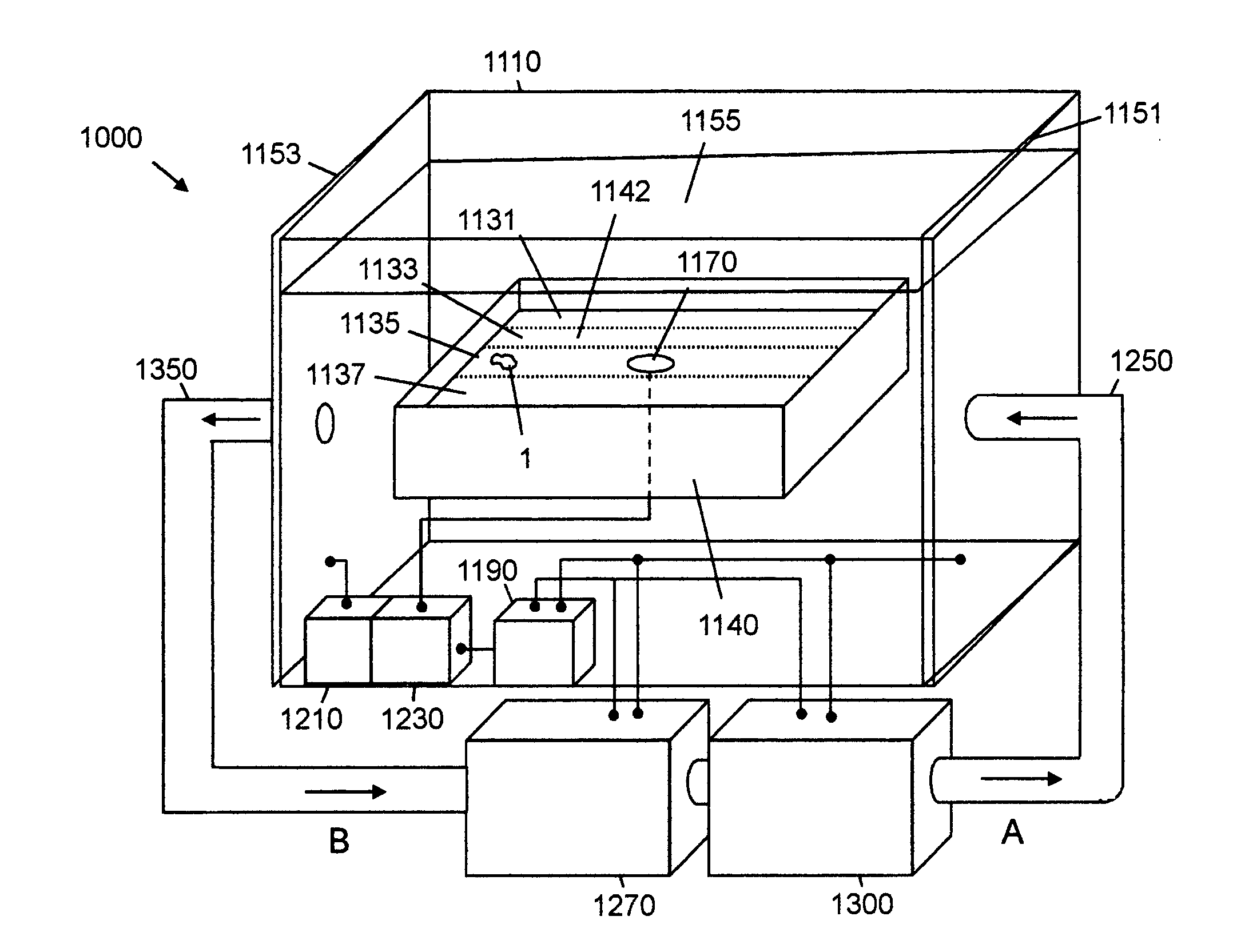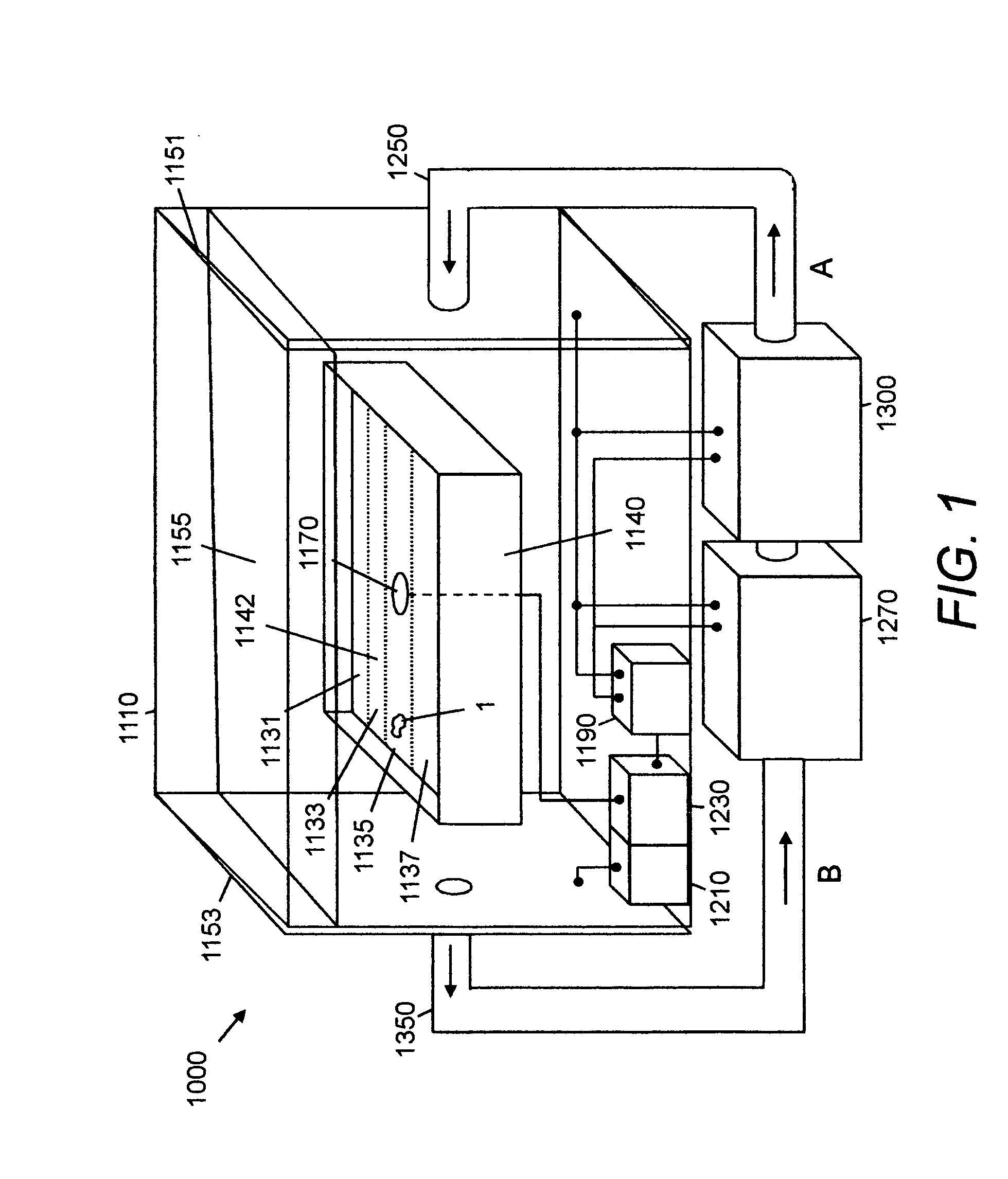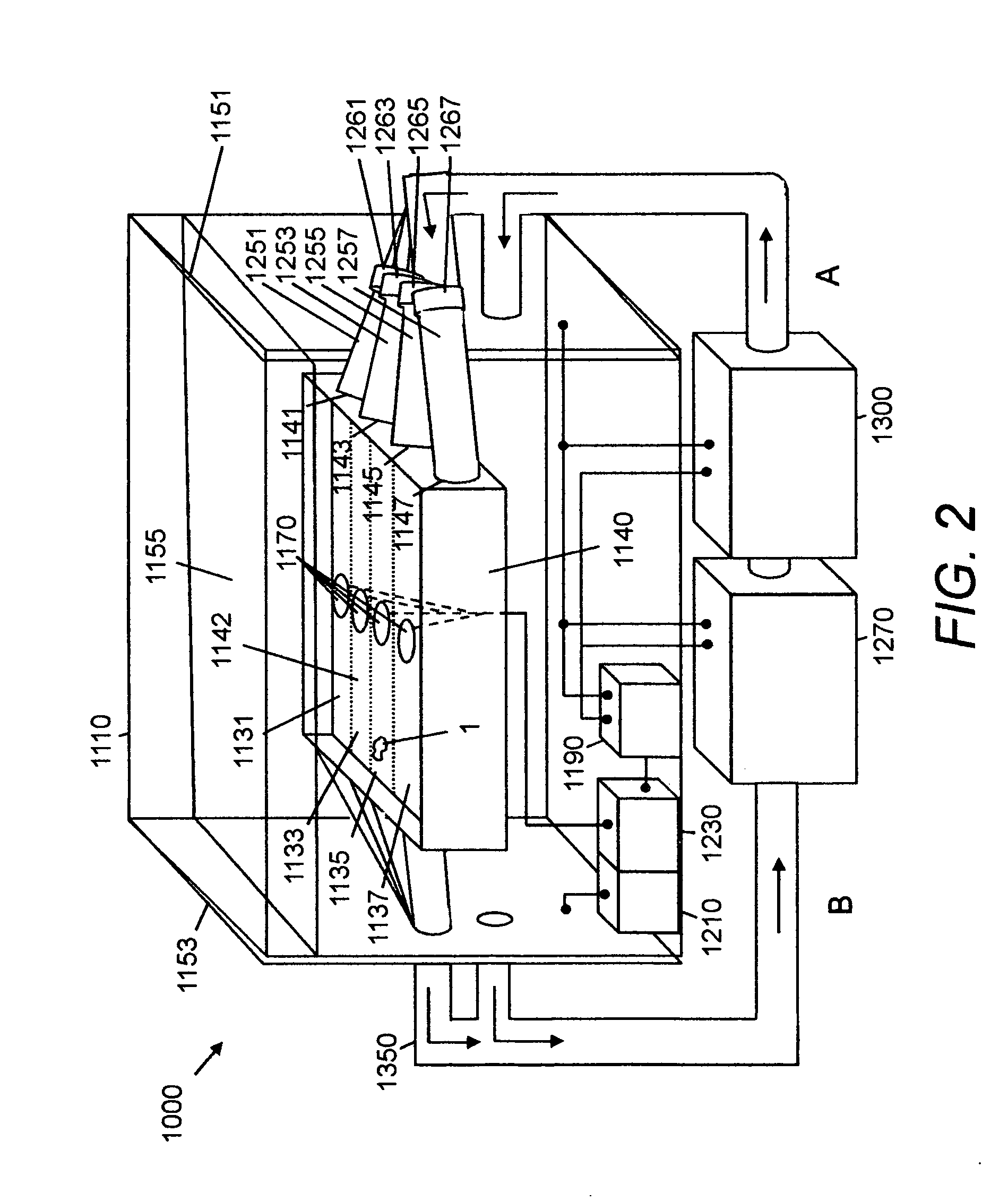Rapid gel electrophoresis system
- Summary
- Abstract
- Description
- Claims
- Application Information
AI Technical Summary
Benefits of technology
Problems solved by technology
Method used
Image
Examples
Embodiment Construction
[0049]Gel electrophoresis is a commonly-performed laboratory procedure used to analyze fragments of DNA—the genetic material found in cells. As biotechnology gains breadth and momentum as a critically important industry for our society, previously arcane procedures such as DNA analysis by gel electrophoresis are increasingly taught at the college and high school levels. One drawback to this technique, however, is the time needed to completely “run” a DNA sample on a “gel.” This constraint is due largely to the higher voltage and subsequent temperature increase observed when trying to run gels faster to fit into a set block of time for lab teaching. When attempting to run gels faster by applying higher voltage, the heat changes the viscosity of the gel, and adversely affects the DNA fragment profile, hindering analysis.
[0050]The present invention cools the gels used in electrophoresis gel systems with the aim of expediting gel electrophoresis by incorporating temperature sensing and ...
PUM
 Login to View More
Login to View More Abstract
Description
Claims
Application Information
 Login to View More
Login to View More - R&D
- Intellectual Property
- Life Sciences
- Materials
- Tech Scout
- Unparalleled Data Quality
- Higher Quality Content
- 60% Fewer Hallucinations
Browse by: Latest US Patents, China's latest patents, Technical Efficacy Thesaurus, Application Domain, Technology Topic, Popular Technical Reports.
© 2025 PatSnap. All rights reserved.Legal|Privacy policy|Modern Slavery Act Transparency Statement|Sitemap|About US| Contact US: help@patsnap.com



